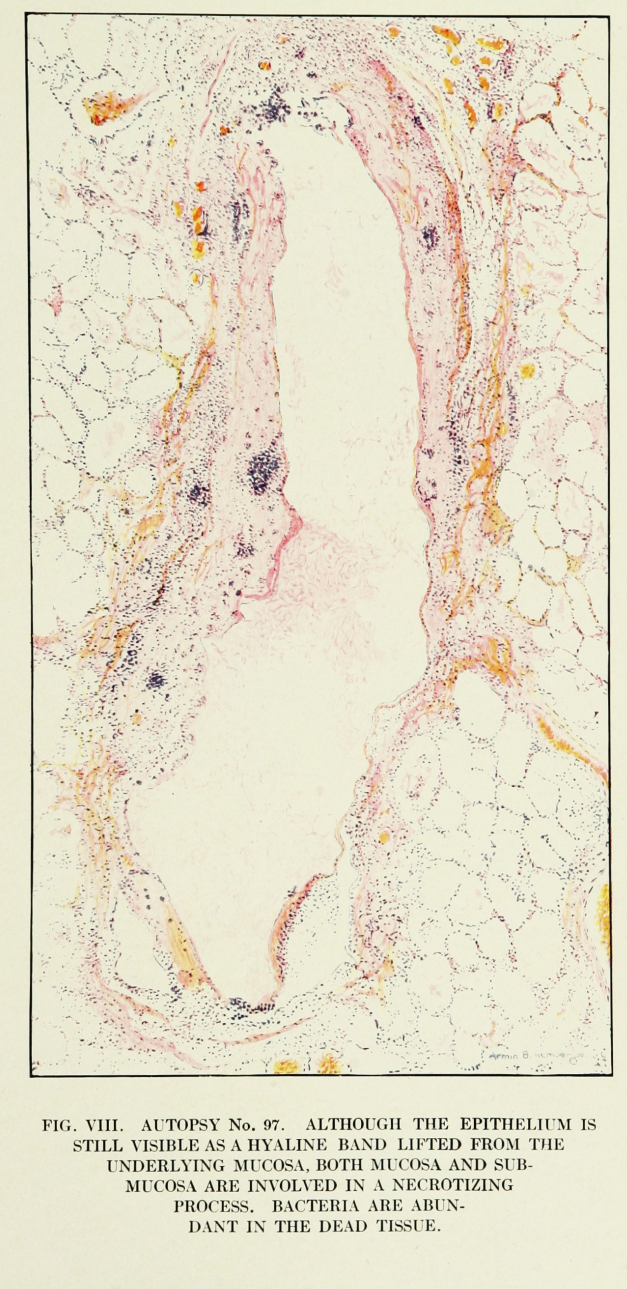

Modern pathological biologists and doctors assert that viruses which cause congestion of the pulmonary system (rhinovirus, influenza, coronavirus, RSV, etc) can also cause pulmonary inflammation leading to bacterial growth, pneumonia and death. This phenomena is known as coinfection and is how doctors explain deaths from "influenza" such as those that occurred in 1918 and also in the current nCoVID-19 hysteria. In my opinion, this is a false idea which has been popularized to support pandemic hysterias and has no medical basis. If such viruses could cause pulmonary inflammation, then this inflammation would routinely occur in such infections but it does not. In cases where physicians have claimed that an old person who died of pneumonia got the "flu" first, there is never any proof that the alleged flu actually caused inflammation, rather than the bacteria that killed the person.
To understand pulmonary inflammation, let's look at some actual histology from 1918. In the illustrations below (from Winternitz's Pathology of Influenza), you can see typical lethal inflammation of pulmonary tissue as it was found during the events of 1918. The dark black areas are dead tissue in which bacteria are particularly abundant. Most bacteria, like pneumococcus, have an outer layer of their skin which contains an organic poison called endotoxin. When the bacteria die, their outer membrane collapses and the endotoxin is released. This powerful toxin kills cells and causes inflammation (redness) in the lung and trachea during a bacterial infection of those parts of the body. A race occurs in which the body attempts to kill the bacteria with pus before the bacteria become so numerous that their toxins kill large areas of tissue. When this happens, called necrosis, the process becomes irreversible and has fatal results.
In 1918, doctors speculated that a bacteria known as Pfeiffer's Bacillus caused colds and was responsible for starting the process of inflammation in the lungs that led to fatal pneumonia. They therefore renamed this bacteria to Haemophilus influenzae and blamed it for the epidemic of "influenza." This was a reasonable conclusion, because this kind of bacteria is frequently found in the lungs and has endotoxin so it can cause inflammation. However, in the modern scheme of things, we know that cold symptoms are not caused by bacteria, but by viruses. The medical community has nevertheless continued to assert that "flu" (now meaning viruses) can cause inflammation. They are borrowing the behavior of bacteria as discovered in 1918 and attributing it to viruses without any evidence. I think it is self evident that viruses cannot cause inflammation in the same way as bacteria because bacteria have endotoxin and viruses do not.

|  |